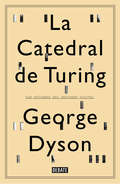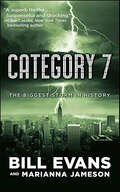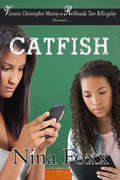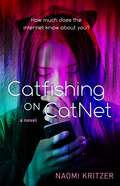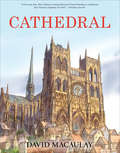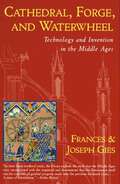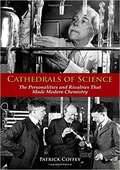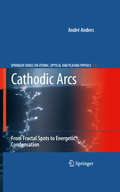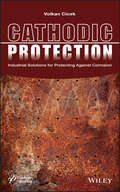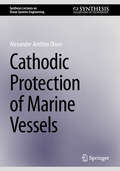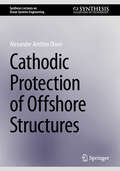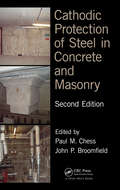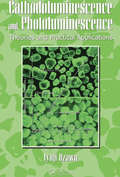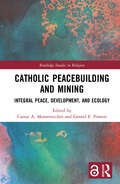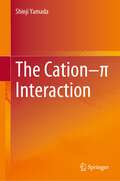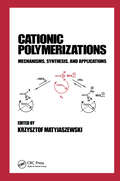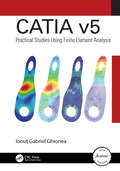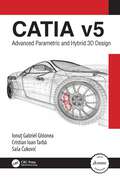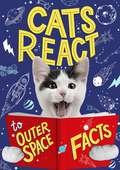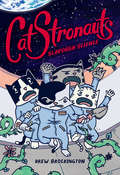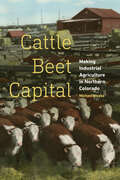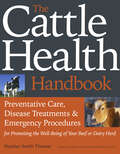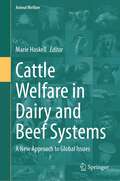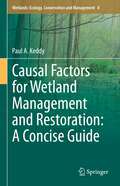- Table View
- List View
La catedral de Turing: Los orígenes del universo digital
by George Dyson«Es posible inventar una sola máquina que pueda utilizarse para computar cualquier secuencia computable», anunció en 1936 un joven Alan Turing de veinticuatro años. En los años 40 y 50 un reducido grupo de hombres y mujeres, liderado por John von Neumann, se reunió en Princeton, New Jersey, para comenzar la construcción de una de los primeros ordenadores que materializaría la visión de Alan Turing de una máquina universal. Los códigos generados en ese embrión de universo de 5 kilobytes (menos memoria de lo que requiere un solo icono en la pantalla de un ordenador actual) rompieron la distinción entre números que significan cosas y números que hacen cosas, y nuestro universo cambió para siempre. La catedral de Turing es la historia de la invención más constructiva del siglo XX, el ordenador digital, de quiénes y cómo la crearon. Un relato histórico y profético que nos cuenta cómo el código logró conquistar el mundo y se aventura a plantear el futurodel universo digital."No es solo un libro extraordinario sobre ciencia. Es un libro extraordinario, punto." #The Globe and Mail «Si quieres estar mentalmente preparado para la próxima revolución informática, el libro de Dyson es imprescindible. Pero también es imprescindible si solo quieres una historia apasionada de cómo los científicos de verdad (como mínimo algunos) piensan y trabajan.» Literary Review
Category 7
by Bill Evans Marianna JamesonA Category 4 hurricane, with winds of up to 155 miles per hour, tears roofs off buildings, smashes windows and doors, and can send floodwaters up to the second floor. Evacuation is suggested for up to six miles inland. Hurricane Katrina was a Category 4 when she made landfall. Hurricane Simone is a Category 7—the biggest, strongest storm in recorded history. When she hits New York City, skyscrapers will fall. Subways and tunnels will flood. Lower Manhattan and much of Queens and Brooklyn will disappear under more than thirty feet of water. All along the Eastern Seaboard, towns and cities are being evacuated as wind-driven rain lashes the coast and storm surges crash through seawalls. Roads are packed with fleeing motorists whose cars are jammed with every personal possession that can be crammed in, plus family members, friends, and beloved pets. A huge natural disaster is brewing in the Atlantic.Except that Simone isn't natural. She's the product of rogue weather science being wielded by billionaire Carter Thompson as part of a personal vendetta against US President Winslow Benson. Once Carter wanted to bring rain to the desert and feed the starving peoples of the planet. Now he wants to show Benson—and the rest of the world—just how powerful wind and water can be.If technology created Simone, perhaps technology can stop her. It's up to Kate Sherman, once a member of Carter's weather team; and Jake Baxter, a weatherman for the CIA, to try, using a secret US Navy weapon. The catch? It has to be deployed inside the hurricane. At the Publisher's request, this title is being sold without Digital Rights Management Software (DRM) applied.
Catfish
by Nina FoxxBest Friends Dana and Damika share everything about each other, because that's what best friends do, right? But when it comes to relationships, the high schoolers are keeping secrets in cyberspace. After Boy Crazy Dana meets the "perfect" guy, she figures the only way to get close is to tell little white lies. As their relationship flourishes, an inappropriate photo sent for his eyes only...ends up going viral, and threatens Dana's reputation and her future. Tech nerd Damika is able to reinvent herself online and she's created a cyber life that no one knows about but her. When she meets Rosheon, she's thrilled at their budding relationship, until she discovers there's a lot more to him than meets the eye because just as she can reinvent herself....so can others. As the lies become unmanageable, can Dana and Damika dig themselves out of a web of a mess before it's too late? In this page-turning novel, Nina Foxx dives into a world where nothing is as it seems and danger takes on new meaning in cyberspace.
Catfishing on CatNet: A Novel (A CatNet Novel #1)
by Naomi KritzerA Kirkus Reviews 2019 Best of the Year Selection. How much does the internet know about YOU? A thought-provoking near future YA thriller that could not be more timely as it explores issues of online privacy, artificial intelligence, and the power and perils of social networks. <p><p> Because her mom is always on the move, Steph hasn’t lived anyplace longer than six months. Her only constant is an online community called CatNet—a social media site where users upload cat pictures—a place she knows she is welcome. What Steph doesn’t know is that the admin of the site, CheshireCat, is a sentient A.I. When a threat from Steph’s past catches up to her and ChesireCat’s existence is discovered by outsiders, it’s up to Steph and her friends, both online and IRL, to save her. <p> Catfishing on CatNet is a surprising, heartfelt near-future YA thriller by award-winning author Naomi Kritzer, whose short story “Cat Pictures Please” won the Hugo Award and Locus Award and was a finalist for the Nebula.
Cathedral: The Story of Its Construction, Revised and in Full Color
by David MacaulayReaders worldwide recognize Caldecott Medal winner David Macaulay's imaginary Cathedral of Chutreaux. This critically acclaimed book has been translated into a dozen languages and remains a classic of children's literature and a touchstone for budding architects. <P><P>Cathedral's numerous awards include a prestigious Caldecott Honor and designation as a New York Times Best Illustrated Book of the Year for Macaulay's intricate pen-and-ink illustrations. Journey back to centuries long ago and visit the fictional people of twelfth-, thirteenth-, and fourteenth-century Europe whose dreams, like Cathedral, stand the test of time. <P>This title has been selected as a Common Core text exemplar (Grades 6-8, Informational Texts: Science, Mathematics, and Technical Studies).
Cathedral, Forge, and Waterwheel: Technology and Invention in the Middle Ages (Medieval Life Ser.)
by Frances Gies Joseph Gies“A mine of information” on the surprising technological advances made in the Middle Ages, from the authors of Life in a Medieval City (Kirkus Reviews).“In their latest medieval study, the Gieses explode the myth that the Middle Ages were unconcerned with the empirical and demonstrate that the Renaissance itself was the outcome of gradual progress made over the previous thousand years . . . They describe the above-ground reduction furnace that was feeding iron to local forges where smiths shaped it into parts for the new heavy ploughs, spades, and shoes for horses now beginning to pull with the aid of the padded collar; the triangular lateen sail that could drive Viking ships to trading posts on the Volga; and the considerable extension of the use of the waterwheel. The Gieses work century by century through the Middle Ages (from 500 to 1500), listing new tools and methods, each page full of attractive detail and anecdote. An important chapter is devoted to the influence of China, via the Silk Road, and Islam. We also learn how cities developed from fortresses into centers of commerce and watch the growth of handicrafts, gothic architecture, universities, mass production, the printing press and more.” —Kirkus Reviews“The flame of human ingenuity burned with surprising intensity during the medieval centuries . . . the Gieses here explode the myth of the Dark Ages, showing that the Fall of Rome did not plunge Europe into stagnation and lethargy.” —BooklistIncludes photographs
The Cathedrals of Pisa, Siena and Florence: A Thorough Inspection of the Medieval Construction Techniques (Built Heritage and Geotechnics)
by Pietro Matracchi Luca GiorgiThe construction techniques and concepts of the cathedrals of Pisa, Siena and Florence are examined in detail, based on new data and using a methodological architectural diagnostics approach. New detailed surveys, carried out using often advanced tools, together with direct and in-depth inspections to examine all parts of the buildings, have enabled us to identify the building phases and the different construction techniques used over time. The information thereby acquired also formed the basis for a new interpretation of the archival documents. Accordingly, the problems encountered and the solutions adopted in the three cathedrals have been understood: in Pisa the construction of the elliptical dome above the rectangular crossing consisting of six thin pillars below; in Siena the design changes from the first system in the 13th century to the ‘Duomo Nuovo’, and the structural adaptations following earthquakes; the specific construction solutions adopted in Florence during the instability encountered in the construction of the large vaults of the basilican body. The comparison of the three buildings in terms of architectural and construction solutions also revealed unexpected relationships between the construction events of Siena’s Duomo Nuovo and the solutions then used in the large basilican body of Santa Maria del Fiore. The methodology employed has led to an understanding of the actual structure of the three cathedrals, an essential basis for a correct evaluation of the state of conservation of the churches for any restoration work. The book is aimed at scholars of architecture and ancient building structures, graduate and postgraduate students, and architects and engineers who plan architectural conservation and strengthening works for historical buildings.
Cathedrals Of Science: The Personalities And Rivalries That Made Modern Chemistry
by Patrick CoffeyIn Cathedrals of Science, Patrick Coffey describes how chemistry got its modern footing-how thirteen brilliant men and one woman struggled with the laws of the universe and with each other. They wanted to discover how the world worked, but they also wanted credit for making those discoveries, and their personalities often affected how that credit was assigned. Gilbert Lewis, for example, could be reclusive and resentful, and his enmity with Walther Nernst may have cost him the Nobel Prize; Irving Langmuir, gregarious and charming, "rediscovered" Lewis's theory of the chemical bond and received much of the credit for it. Langmuir's personality smoothed his path to the Nobel Prize over Lewis. Coffey deals with moral and societal issues as well. These same scientists were the first to be seen by their countries as military assets. Fritz Haber, dubbed the "father of chemical warfare," pioneered the use of poison gas in World War I-vividly described-and Glenn Seaborg and Harold Urey were leaders in World War II's Manhattan Project; Urey and Linus Pauling worked for nuclear disarmament after the war. Science was not always fair, and many were excluded. The Nazis pushed Jewish scientists like Haber from their posts in the 1930s. Anti-Semitism was also a force in American chemistry, and few women were allowed in; Pauling, for example, used his influence to cut off the funding and block the publications of his rival, Dorothy Wrinch. Cathedrals of Science paints a colorful portrait of the building of modern chemistry from the late 19th to the mid-20th century.
Cathodic Arcs: From Fractal Spots to Energetic Condensation (Springer Series on Atomic, Optical, and Plasma Physics #50)
by André AndersCathodic arcs are among the longest studied yet least understood objects in science. Plasma-generating, tiny spots appear on the cathode; they are highly dynamic and hard to control. With an approach emphasizing the fractal character of cathode spots, strongly fluctuating plasma properties are described such as the presence of multiply charged ions that move with supersonic velocity. Richly illustrated, the book also deals with practical issues, such as arc source construction, macroparticle removal, and the synthesis of dense, well adherent coatings. The book spans a bridge from plasma physics to coatings technology based on energetic condensation, appealing to scientists, practitioners and graduate students alike.
Cathodic Protection: Industrial Solutions for Protecting Against Corrosion
by Volkan CicekA companion to the title Corrosion Chemistry, this volume covers both the theoretical aspects of cathodic protection and the practical applications of the technology, including the most cutting-edge processes and theories. Engineers and scientists across a wide range of disciplines and industries will find this the most up-to-date, comprehensive treatment of cathodic protection available. A superb reference and refresher on the chemistry and uses of the technology for engineers in the field, the book also provides a tremendous introduction to the science for newcomers to the field.
Cathodic Protection of Marine Vessels (Synthesis Lectures on Ocean Systems Engineering)
by Alexander Arnfinn OlsenProtective coatings are the most efficient way to protect ship steel structures from corrosion. However, cathodic protection, often in conjunction with protective coatings, is also used to protect immersed parts of bare steel surfaces (including coating damaged areas) from corrosion. This includes the external hull surface and the internal surfaces of tanks, such as ballast tanks. Cathodic protection (CP) can be Impressed Current Cathodic Protection, Galvanic Anode Cathodic Protection, or a combination of both. Cathodic protection controls corrosion by supplying direct current to the immersed surface of the structure, thus making the structure a cathode of a cell. The external hull of a ship is exposed to different waters with differing chemistries, which have a profound influence on the cathodic protection. This short text on Cathodic Protection of Marine Vessels was developed to provide guidelines for ship cathodic protection design, installation, and maintenance given it is a common practice for a ship to have cathodic protection systems installed during its new construction.
Cathodic Protection of Offshore Structures (Synthesis Lectures on Ocean Systems Engineering)
by Alexander Arnfinn OlsenCathodic protection, when used in conjunction with protective coatings, is a common method used to protect immersed parts of steel surfaces from corrosion. This text offers detailed recommendations on cathodic protection for offshore structures. Traditional seagoing vessels dock at regular intervals, but offshore structures such as Floating Production Storage and Offloading structures (FPSOs) are stationary and are in continuous operation for prolonged periods of time. Therefore, the design of the corrosion protection for a 15-year or longer service life of a floating offshore structure requires special consideration. Some Floating Production Installations (FPIs) have hull designs similar to oil tankers, especially those converted from oil tankers. Others are designed and built as floating production platforms. Cathodic protection systems are to consider the structure to be protected as a whole as well as individual components which are attached to the structure. The information presented in the text is intended solely to assist the reader in the methodologies and/or techniques discussed. This text does not and cannot replace the analysis and/or advice of a qualified professional. It is the responsibility of the reader to perform their own assessment and obtain professional advice. Information contained in this text is considered to be pertinent at the time of publication but may be invalidated as a result of subsequent legislation, regulations, standards, methods, and/or more updated information and the reader assumes full responsibility for compliance.
Cathodic Protection of Steel in Concrete and Masonry
by Paul M. Chess John P. BroomfieldRevised and updated, this second edition of Cathodic Protection of Steel in Concrete and Masonry covers both reinforced concrete and masonry structures, describes in detail the overall design factors involved in cathodic protection (CP), and also provides a theoretical basis for why it works. It refers to the new European standard EN 12696 for cath
Cathodoluminescence and Photoluminescence: Theories and Practical Applications
by Lyuji OzawaWritten by a senior industry expert with nearly 40 years of hands-on experience, Cathodoluminescence and Photoluminescence: Theories and Practical Applications presents a thorough review of advances, challenges, and recommendations for improving photoluminescent (PL) and cathodoluminescent (CL) phosphor display devices in terms of energy efficiency, image quality, color fidelity, operational lifetime, and production cost.This book traces the development of cathode ray tubes (CRTs), PL and CL phosphor screens, and fluorescent lamps (FL) into modern phosphor display devices. The author relates luminescence phenomena and color to chemical composition, excitation mechanisms, energy conversion efficiencies, and bulk properties of phosphor particles. He also addresses image quality issues such as flickering, smearing, whitening, and contrast. Subsequent chapters focus on powder deposition techniques and the production of phosphor powders themselves. The text describes the necessary raw materials, flux materials, and growth conditions for producing ZnS powders. It provides a quantitative analysis on optimal processes and parameters for ensuring higher quality color and screen resolution. Offering a detailed guide for next-generation scientists and engineers in the field, Cathodoluminescence and Photoluminescence describes current technologies and promising developments for producing higher quality, energy-efficient, and long-lasting phosphor CR and flat CL screen displays.
Catholic Peacebuilding and Mining: Integral Peace, Development, and Ecology (Routledge Studies in Religion)
by Caesar A. MontevecchioThis book explores the role of Catholic peacebuilding in addressing the global mining industry. Mining is intimately linked to issues of conflict, human rights, sustainable development, governance, and environmental justice. As an institution of significant scope and scale with a large network of actors at all levels and substantial theoretical and ethical resources, the Catholic Church is well positioned to acknowledge the essential role of mining, while challenging unethical and harmful practices, and promoting integral peace, development, and ecology. Drawing together theology, ethics, and praxis, the volume reflects the diversity of Catholic action on mining and the importance of an integrated approach. It includes contributions by an international and interdisciplinary range of scholars and practitioners. They examine Catholic action on mining in El Salvador, Peru, Colombia, the Democratic Republic of the Congo, and the Philippines. They also address general issues of corporate social responsibility, human rights, development, ecology, and peacebuilding. The book will be of interest to scholars of theology, social ethics, and Catholic studies as well as those specializing in development, ecology, human rights, and peace studies.
The Cation–π Interaction
by Shinji YamadaThis book introduces the role of cation–π interactions in chemistry, biology, and polymer materials science. Since the cation–π interaction was defined in 1990, its importance has been recognized in a variety of fields due to its relatively significant interaction energy. A number of examples are introduced in which the contribution of cation-π interactions was evidenced by X-ray structures, spectroscopies, computations, and other means. The latest developments in these areas are remarkable; therefore, many recent examples are included.As this book covers the basic aspects of the applications of cation–π interactions it is useful for students and researchers in a wide variety of scientific fields. In addition, the book will not only facilitate understanding of the phenomena occurring in various systems but also provides insights into the design of new catalysts, reactions, and materials.
Cationic Polymerizations: Mechanisms, Synthesis & Applications (Plastics Engineering)
by Krzysztof MatyjaszewskiThis unified presentation of cationic polymerization discusses initiation, propagation, transfer, and termination in cationic polymerizations of alkenes and heterocycles. It also elucidates the mechanisms of the reactions involved in all carbocationic and ring-opening polymerizations. It is written by internationally acclaimed experts in their resp
CATIA v5: Practical Studies Using Finite Element Analysis
by Ionuţ Gabriel GhioneaCATIA v5 is the world’s leading 3D CAD engineering and design software, used in a variety of industries to design, innovate, simulate, analyse and manufacture products. CATIA is taught at thousands of academic institutions around the globe to prepare today the great engineers of tomorrow.This book is more than an introduction to CATIA v5 Finite Element Analysis, providing a practical approach to the subject. The basic concepts of finite element analysis (FEA) in CATIA v5 are explained and augmented with examples and figures for a thorough understanding of the subjects.The book is intended to be used by students from programs with a mechanical or industrial engineering background, but also by design and control engineers from various industries (automotive, aerospace, military, heavy machinery, medical technology, etc.). These users need to work and verify their 3D parts and assemblies by applying various methods. Among them, the finite element method (FEM) is a very important tool because it provides information on how the stresses are distributed in the component parts, how the loads are applied and what are the values and orientations of the resulting displacements.All the content is organized in a logical manner, with chapters that cover both theoretical concepts and practical issues addressed through the use of modelling, assembly and FEA. The presented applications are clearly written and easy to understand, with step-by-step instructions and ample explanations, illustrations and figures. Many of the tutorials start from the beginning, including the parametric modelling of the part and the interpretation of FEM analysis results.From students to engineers, all are advised to open and follow the pages of this book with interest and perseverance, to patiently go through all the explanations of the presented tutorials, to explore the proposed FEM problems and then to successfully apply the knowledge acquired in their professional activities.
CATIA v5: Advanced Parametric and Hybrid 3D Design
by Ionuţ Gabriel Ghionea Cristian Ioan Tarbă Saša ĆukovićThis tutorial textbook is an essential companion to using CATIA v5 to assist with computer-aided design. Using clear CAD examples, it demonstrates the various ways through which the potential of this versatile software can be used to aid engineers in 3D modelling. Based on 20 years of teaching experience, the authors present methods of using CATIA v5 to model solid and surface parts, to perform parametric modelling and design of families of parts, reconstruction of surfaces, to create macros and to apply various tools and their options during 3D modelling. Importantly, this book will also help readers to discover multiple modelling solutions and approaches to solve common issues within design engineering. With a comprehensive approach, this book is suitable for both beginners and those with a good grasp of CATIA v5. Featuring an end chapter with questions and solutions for self-assessment, this book also includes 3D modelling practice problems, presented in the form of 2D engineering drawings of many 3D parts in both orthogonal and isometric views. Using the knowledge gained through reading the book chapters, users will learn how to approach surfaces and solids as 3D models using CATIA v5. This book provides detailed explanations, using clear figures, annotations and links to video tutorials. It is an ideal companion for any student or engineer using CATIA v5, in industries including automotive, naval, aerospace and design engineering. Readers of this book should note that the length and distance dimensions are in millimeters and the angular dimensions are in degrees. All other parameters, such as radii, areas and volumes, also use the metric system.
Cats React to Outer Space Facts
by Izzi HowellCats React is back for a second instalment! Share in the wonderment of space with a crew of crazy cats and measure your amazement, awe and disgust alongside their furry feline faces!Like every topic, space becomes more interesting when cats are involved. Cats React to Space Facts is an engaging and fun way to understand our universe. It's just purrfect! Bitesize text, fun photos, diagrams, dollops of humour and a react-o-meter all help to make science memorable and fun to learn.This book is a great gift for cat lovers and science students aged 7 and beyond, covering physics in a unique way.
CatStronauts: Slapdash Science (CatStronauts #5)
by Drew BrockingtonIn the fifth book in the CatStronauts graphic novel series, Pom Pom pushes her experiments to the limit on the International Space Station, while the cats at Mission Control take a much needed break. What could possibly go wrong? While the cats are away, the other cats will play! Flight Director Maisy is off on her first vacation in years, and World's Best Scientist is looking for a secret vacation of his own. But while the party picks up on Earth, the CatStronauts are trying to get all of their work on the International Space Station done in record time. So when disaster strikes in space, the CatStronauts will have to fix everything without their trusty support team at Mission Control. In this full-color graphic novel, debut author/illustrator Drew Brockington pushes CatStronauts team further than ever, adding in mounds of experiments, teamwork, and tuna fish by the ton! <P><P> <i>Advisory: Bookshare has learned that this book offers only partial accessibility. We have kept it in the collection because it is useful for some of our members. Benetech is actively working on projects to improve accessibility issues such as these.</i>
Cattle Beet Capital: Making Industrial Agriculture in Northern Colorado
by Michael WeeksIn 1870 several hundred settlers arrived at a patch of land at the confluence of the South Platte and Cache la Poudre Rivers in Colorado Territory. Their planned agricultural community, which they named Greeley, was centered around small landholdings, shared irrigation, and a variety of market crops. One hundred years later, Greeley was the home of the world&’s largest concentrated cattle-feeding operation, with the resources of an entire region directed toward manufacturing beef. How did that transformation happen? Cattle Beet Capital is animated by that question. Expanding outward from Greeley to all of northern Colorado, Cattle Beet Capital shows how the beet sugar industry came to dominate the region in the early twentieth century through a reciprocal relationship with its growers that supported a healthy and sustainable agriculture while simultaneously exploiting tens of thousands of migrant laborers. Michael Weeks shows how the state provided much of the scaffolding for the industry in the form of tariffs and research that synchronized with the agendas of industry and large farmers. The transformations that led to commercial feedlots began during the 1930s as farmers replaced crop rotations and seasonal livestock operations with densely packed cattle pens, mono-cropped corn, and the products pouring out of agro-industrial labs and factories. Using the lens of the northern Colorado region, Cattle Beet Capital illuminates the historical processes that made our modern food systems.
The Cattle Health Handbook: Preventative Care, Disease Treatments And Emergency Procedures
by Heather Smith ThomasIn this practical guide, Heather Smith Thomas provides easy-to-execute solutions for a variety of common medical situations that can afflict your animals, including bacterial diseases, parasites, and nutritional deficiencies.
Cattle Welfare in Dairy and Beef Systems: A New Approach to Global Issues (Animal Welfare #23)
by Marie HaskellThis book provides a comprehensive coverage of all aspects of the welfare of cattle. It starts with a consideration of animal welfare science and its application to the management of cattle and moves through to discussions of the challenges and opportunities for providing good welfare for cattle in farming and husbandry systems across the globe. The first section comprises three chapters that discuss the social, behavioural and physiological methods that can be used to assess welfare in cattle. The second section considers the welfare challenges of beef and dairy cattle in extensive and intensive systems. The third section details welfare challenges such as at slaughter, during handling and in the growing period and details solutions such as the use of sensors and application of animal breeding techniques. The final section addresses welfare challenges and solutions in achieving sustainability, in smallholder farms in Africa and new entrant dairying in Asia and cow shelters in India. This work makes a valuable contribution to the field of animal welfare and modern livestock farming. It is a must-read for researchers and students, veterinarians as well as industry personnel and informed farmers and producers.
Causal Factors for Wetland Management and Restoration: A Concise Guide (Wetlands: Ecology, Conservation and Management #8)
by Paul A. KeddyThis book presents 12 effective methods to manage wetlands for conservation. It offers a tool box of causal factors that can be used to protect and restore wetlands to enhance biological diversity and other functions. Each causal factor is introduced, briefly explained, and then illuminated with selected examples from around the world.The book provides a prioritized shopping list of methods for protecting and restoring wetlands. The three first and most important causal factors are flooding, fertility, and natural disturbance. Then nine other causal factors are introduced, including herbivory, sedimentation, roads, invasive species, and coarse woody debris. Each causal factor is carefully linked to the scientific literature and explained using the author’s own experience. The same list of 12 causal factors applies around the world—whether you are managing a temperate zone floodplain, a tropical peatland, a freshwater marsh, or a coastal mangrove swamp. Instead of hiring an expensive team of consultants, or pouring through hundreds of scientific papers, here is one concise guide to methods that can be immediately applied to benefit any wetland.Professor Paul Keddy has spent more than 50 years studying wetlands, and writing and lecturing about the environmental factors that control them. He has published more than 150 scholarly papers, and won multiple scientific prizes. His book Wetland Ecology is widely used to teach the principles of wetland science. Causal Factors for Wetland Management: A Concise Guide has a much simpler message: how to protect and enhance wetlands. In this concise guide, he has condensed a lifetime of experience into just 12 principles. The book is aimed at all people who protect or restore wetlands: park managers, wildlife biologists, landscape architects, engineers, environmental consultants, environmental agencies, conservation authorities, and NGOs—as well as landowners and concerned citizens. Causal Factors for Wetland Management: A Concise Guide is essential reading for anyone who cares for wetlands and wild places.
